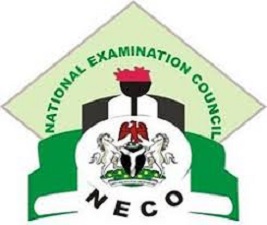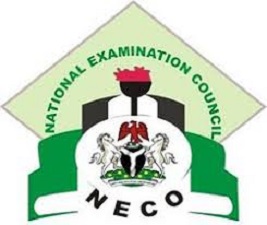2023 NECO Biology Answers
BIOLOGY
01-10: BBEDAACADA
11-20: DDCEADDAEC
21-30: BBBBEDDBDD
31-40: EDACCCBCEA
41-50: EBBCACBABC
51-60: DDABEDDDBE
COMPLETED
*NECO BIOLOGY*
*NUMBER 4 ????????????????????????*
*(4ai)*
(PICK ANY THREE)
(i) The crops with tap roots should be followed by those with fibrous root system.
(ii) Selection of the crop should be demand based.
(iii) The selection of crops should be problem based.
(iv) The selection of crops should suit to the farmer’s financial conditions.
(v) More exhaustive crops should be followed by less exhaustive crops.
(vi) The crops selected should also suit to the soil and climate conditions.
(vi) The crops selected should also suit to the soil and climate conditions.
*(4aii)*
(PICK ANY FIVE)
(i) The presence of thick, waxy cuticles on leaves:
(ii) Stomata present in the upper epidermis only:
(iii) Shrinking of hinge cells when flaccid:
(iv) Flashy succulent leaves:
(v) Have reduced number of stomata:
(vi) Sunken stomata or presence of crypts and leaf surface covered with fine hairs.
(vii) Closed stomata in the presence of light and opened stomata in the absence of light:
(viii) Leaves are reduced to spines, needles, or scales and they are folded or rolled when flaccid
*(4bi)*
(i) Feathers : Feathers are modified scales that provide insulation and enable flight in birds. Some fossil reptiles, such as Archaeopteryx and Microraptor, also had feathers, suggesting that they were an ancestral trait that evolved before the divergence of birds and reptiles.
(ii) Bones : Birds have hollow bones that reduce their weight and enhance their flight ability. Some fossil reptiles, such as Coelophysis and Pterosaurs, also had hollow bones, indicating that they were an adaptation to a fast and agile lifestyle.
(iii) Eggs : Birds lay hard-shelled eggs that protect their embryos from dehydration and predation. Reptiles also lay hard-shelled eggs, implying that they share a common reproductive strategy that originated in their ancient ancestors.
*(4bii)*
(PICK ANY FIVE)
(i) Regulates amino acids.
((ii) Regulates blood clothing
(iii) Stores Vitamins and Minerals.
(iv) Processes glucose
(v) Filters blood
(vi) Bile production
(vii) Albumin production
(viii) Resists infections.
*(4c)*
(PICK ANY FOUR)
(i) Reforestation.
(ii) Afforestation
(iii) Protect Existing Forests.
(iv) Sustained Yield Method.
(v) Produce Less Waste
(vi) Monitor Agriculture
(vii) Planned and Regulated Tree-cutting
(viii) Laws and Rules Help Prevent Deforestation.
*(5cii)*
(PICK ANY THREE )
(i) Chloroplast contains a photosynthetic pigment called chlorophyll.
(ii) The stomata are located on the backside of the leaves which helps regulate water loss from the leaves.
(iii) Leaves have a thin structure so that they can provide a short distance for carbon dioxide to diffuse into leaf cells
(iv) The veins of leaves help to transport maximum water molecules and water to all parts of the leaves.
(v) The plant produces larger leaves, which means a larger surface area for maximum absorption of sunlight.
*Biology*
2ai. Rearranging the organisms in order of increasing complexity:
Amoeba → Hydra → Tilapia → Toad → Snake
2aii. Three features of Tridax procumbens fruit that make it adapted for wind dispersal method are:
1. **Lightweight:** The fruit is small and lightweight, allowing it to be easily carried by the wind.
2. **Pappus:** Tridax procumbens fruit has a pappus, which is a structure resembling fine hairs or bristles that acts as a parachute, aiding in wind dispersal.
3. **Wings or Achenes:** The fruit may have wings or achenes that provide additional lift and stability during wind dispersal.
2b. Experiment to show shoot of a plant is positively phototropic:
**Aim:** To demonstrate the positive phototropic response of a plant shoot to light.
**Apparatus:**
1. Potted plant (e.g., sunflower seedling or bean plant).
2. Light source (lamp or sunlight).
3. Ruler or measuring tape.
4. Stopwatch or timer.
**Method / Procedure:**
1. Place the potted plant in a dark room or a box with an opening on one side, leaving the shoot exposed to darkness.
2. Mark the initial position of the shoot tip on the ruler or measuring tape.
3. Turn on the light source and position it on one side of the plant shoot, ensuring that the light shines directly on the shoot.
4. Start the stopwatch.
**Observation:**
Observe and record the movement of the shoot tip over a specific period, such as every 30 minutes, for a few hours.
**Conclusion:**
The shoot of the plant will exhibit positive phototropism, bending towards the light source. This shows that the plant shoot is positively phototropic and actively responds to the light stimulus by growing towards it.
*Biology-Obj!*
01-10: BBEDACCAEE
11-20: DDCEABDAEC
21-30: EBBBEADBDD
31-40: EDACCCBCEA
41-50: EBBCACBAEC
51-60: DDABBDDDBE
COMPLETED
*NECO BIOLOGY SOLUTIONS*
===================================
“`INSTRUCTION; ANSWER THREE(3) QUESTIONS ONLY“`
(1ai)
The cell theory states that:
(i) All living organisms are made up of one or more cells.
(ii) The cell is the basic unit of life.
(iii) All cells arise from pre-existing cells.
(1aii)
(i) Robert Hooke, who discovered cells in 1665 and coined the term “cell”.
(ii) Matthias Schleiden and Theodor Schwann, who proposed the cell theory in 1839-1840.
(1bi)
(i) Large, brightly colored petals that attract insects.
(ii) Nectar-producing glands to feed the insects.
(iii) A strong, sweet fragrance to attract the insects.
(iv) A landing platform for the insects to rest on.
(v) Pollen that is sticky and easily attaches to the insects.
(1bii)
– Ginger: Rhizome
– Banana: Rhizome
– Sweet potato: Tuber
(1c)
(i) The mouth mechanically breaks down the bread by chewing and mixes it with saliva, which contains enzymes that begin breaking down the carbohydrates in the bread.
(ii) The esophagus moves the food down to the stomach, where it is mixed with stomach acid and enzymes that further break down the bread.
(iii) The small intestine absorbs the nutrients from the bread, such as carbohydrates, proteins, and fats, into the bloodstream.
(iv) The large intestine absorbs water and electrolytes from the remaining food waste, forming feces.
(v) The rectum stores feces until they can be eliminated through the anus.
===================================
(2ai)
Amoeba —> Hydra —> Tilapia —> Toad —> Snake
(2aii)
(i) Small, lightweight seeds that can be easily carried by the wind.
(ii) Hairs or wings on the fruit that increase surface area and help to catch the wind.
(iii) A dry, papery fruit that splits open easily to release the seeds.
(2b)
=Aim:=
To determine if the shoot of a plant is positively phototropic.
=Apparatus:=
A potted plant, a light source, a ruler, a marker.
=Method/Procedure:=
(i) Place the plant in a dark room for 24 hours to ensure that it is not positively or negatively phototropic.
(ii) Place the light source at a fixed distance from the plant, with the light shining directly on the plant’s shoot.
(iii) Turn on the light source and leave it on for 24 hours.
(iv) After 24 hours, measure the distance between the tip of the shoot and the light source.
(v) Mark the new position of the shoot tip on the ruler.
(vi) Repeat the experiment two more times, moving the light source to a different position each time.
=Observation:=
The shoot of the plant will grow towards them light source, bending in the direction of the light.
=Conclusion:=
The shoot of a plant is positively phototropic and grows towards a light source.
(2c)
[TABULATE]
=Aerobic Respiration=
(i) Occurs in the presence of oxygen
(ii) Produces a large amount of ATP
(iii) Carbon dioxide and water are produced as waste products
=Anaerobic Respiration=
(i) Occurs in the absence of oxygen
(ii) Produces a small amount of ATP
(iii) Lactic acid or ethanol is produced as a waste product
===================================
(3ai)
– Rivers
– Lakes
(3aii)
TABULATE
=Complete Metamorphosis=
(i) Four distinct stages: egg, larva, pupa, adult.
(ii) Larva looks completely different from the adult.
=Incomplete Metamorphosis=
(i) Three stages: egg, nymph, adult.
(ii) Nymph looks similar to the adult, just smaller.
(3b)
– Aim: To determine if chlorophyll is necessary for photosynthesis to take place.
– Apparatus: Two plants of the same species, one with leaves covered in aluminum foil, a light source, test tube, water, and a beaker.
– Method/procedure: Place one plant in a dark room and cover its leaves with aluminum foil. Place the other plant in front of a light source. After a few hours, pluck a leaf from each plant and place them in separate test tubes filled with water. Place the test tubes in a beaker and keep them in the dark.
– Observation: After a few hours, observe the test tubes to see which one has produced more oxygen bubbles.
– Conclusion: If the test tube with the leaf from the plant exposed to light produces more oxygen bubbles, then chlorophyll is necessary for photosynthesis to take place.
(3ci)
(i) Overuse of synthetic fertilizers
(ii) Overgrazing
(iii) Deforestation
(iv) Soil erosion
(3cii)
(i) Hearing loss
(ii) Sleep disturbance
===================================
(4ai)
(i) Crop diversity: Planting different crops in the same field over time to avoid the buildup of pests and diseases.
(ii) Soil health: Planting crops that have different nutrient requirements to maintain soil fertility and prevent soil erosion.
(iii) Pest management: Planting crops that are not susceptible to the same pests and diseases in succession.
(4aii)
(i) Reduced leaves or spines to minimize water loss through transpiration.
(ii) Thick cuticles and waxy coatings to reduce water loss through the epidermis.
(iii) Deep roots to tap into underground water sources.
(iv) CAM photosynthesis to reduce water loss during photosynthesis.
(v) Ability to enter dormancy during drought periods.
(4bi)
(i) Similarity in bone structure between birds and reptiles, especially in the skull and pelvis.
(ii) Presence of scales on bird feet and legs, which are also found in reptiles.
(iii) Similarity in egg-laying and incubation between birds and reptiles.
(4bii)
(i) Detoxification of harmful substances in the blood.
(ii) Production of bile to aid in digestion.
(iii) Storage of glycogen, vitamins, and minerals.
(iv) Regulation of blood glucose levels.
(v) Production of blood clotting factors.
(4c)
(i) Reforestation: Planting new trees in areas where forests have been cleared or degraded.
(ii) Reduced impact logging: Using sustainable logging practices that minimize damage to the forest ecosystem.
(iii) Protected areas: Establishing and maintaining protected areas for wildlife and biodiversity conservation.
(iv) Community forestry: Encouraging local communities to manage forests sustainably for their own benefit and for the benefit of future generations.
===================================
(5a)
DIAGRAM
(5bi)
(i) Protection: the calyx protects the flower bud before it opens and the developing fruit after fertilization.
(ii) Support: the sepals of the calyx can provide support for the petals and reproductive structures.
(5bii)
(i) Insulin: regulates blood sugar levels.
(ii) Estrogen: regulates female reproductive system and secondary sexual characteristics.
(iii) Testosterone: regulates male reproductive system and secondary sexual characteristics.
(iv) Adrenaline: prepares the body for “fight or flight” response to stress.
(v) Melatonin: regulates sleep-wake cycles.
(5ci)
(i) Gene therapy: correcting genetic disorders by introducing functional genes into the patient’s cells.
(ii) Predictive medicine: using genetic testing to identify individuals who are at risk for certain diseases and develop personalized prevention or treatment plans.
(5cii)
(i) Large surface area: to maximize light absorption.
(ii) Thin and flat shape: to reduce the distance that light needs to penetrate into the leaf.
(iii) Chlorophyll pigments: to absorb light energy and convert it into chemical energy.
===================================
*COMPLETED BY stewartsolution No.1 Brainiac $olver*


When do the answers come
hello my friendy
look don it